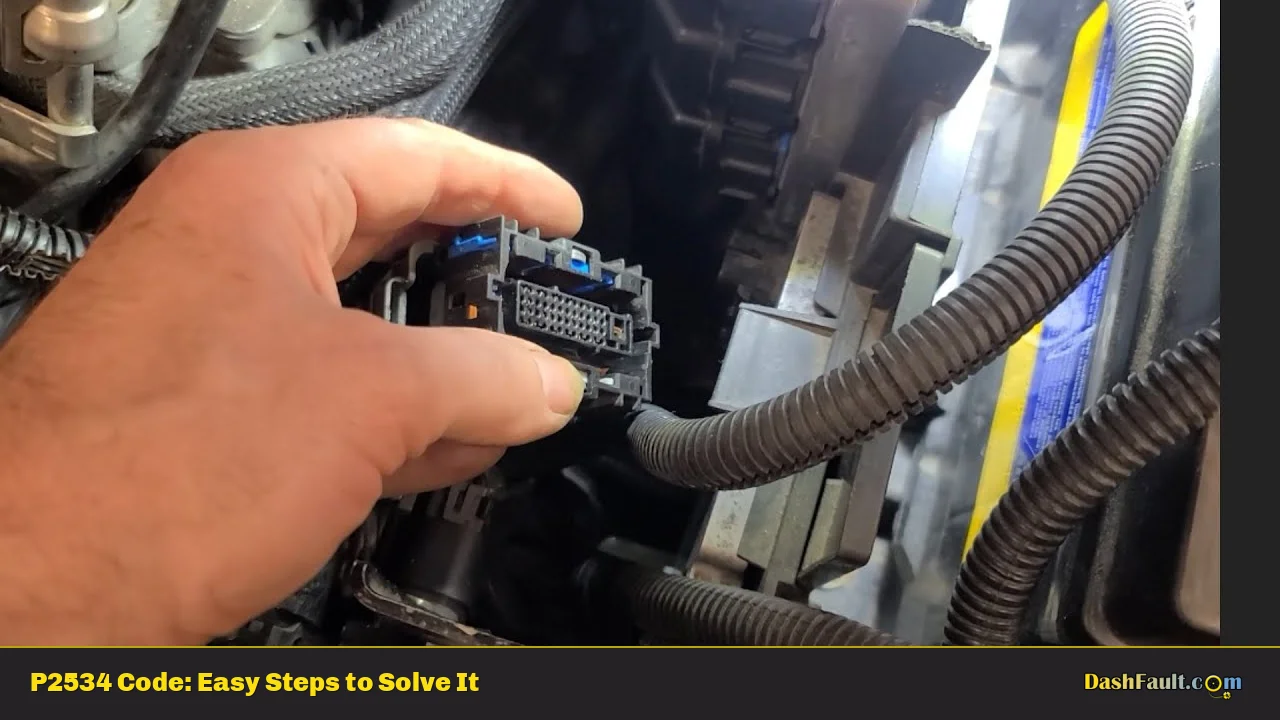The P2534 trouble code is an OBD-II diagnostic trouble code that signifies an issue with the ignition switch run/start position circuit. Specifically, it indicates that the voltage detected in this circuit is below the manufacturer’s specified threshold. This code can lead to various starting problems and may trigger the check engine light, making it crucial for vehicle owners and DIY mechanics to understand its implications and solutions.
| P2534 Code Meaning | P2534 Code Common Causes |
|---|---|
| Ignition Switch Run/Start Position Circuit Low | Faulty ignition switch |
| Voltage below manufacturer specifications | Loose or corroded wiring |
| Potential no-start condition | Blown fuses or fusible links |
| Intermittent stalling issues | Weak battery or failing alternator (less common) |
Symptoms of P2534 Code
When the P2534 code is triggered, several symptoms may manifest, indicating potential issues within the ignition system:
- Illuminated Check Engine Light: The most common symptom, prompting further investigation.
- Failure to Start: The vehicle may turn over but not start due to insufficient voltage reaching the ignition system.
- Unexpected Stalling: The engine may stall unexpectedly while driving, leading to safety concerns.
- Intermittent Starting Problems: The vehicle might start inconsistently, often requiring multiple attempts.
Technical Explanations
The P2534 code is logged when the Powertrain Control Module (PCM) detects that the voltage from the ignition switch run/start position circuit is lower than expected. This circuit is essential as it provides power to various electrical systems in the vehicle when the ignition is turned on.
How the Ignition System Works
- Ignition Switch: When you turn your key to the ‘run’ or ‘start’ position, the ignition switch sends a voltage signal to the PCM.
- Power Distribution: The PCM uses this signal to activate various components, including fuel injectors and ignition coils.
- Voltage Monitoring: If the voltage falls below a certain threshold (typically around 6 volts), it triggers the P2534 code, indicating a fault in the ignition circuit.
Step-by-Step Diagnosis
Diagnosing a P2534 code requires a systematic approach:
- Visual Inspection: Begin by inspecting all wiring and connectors associated with the ignition switch for signs of damage, corrosion, or loose connections.
- Check Battery Voltage: Use a digital multimeter to measure battery voltage at the ignition switch. Ensure it meets manufacturer specifications (usually around 12 volts).
- Test Continuity: Check for continuity in the ignition switch circuit using a multimeter. Look for open circuits that could indicate damaged wiring.
- Inspect Fuses: Check all relevant fuses and fusible links for continuity. Replace any that are blown.
- Monitor Real-Time Data: If available, use an advanced scanner to monitor voltage levels in real-time while cycling through key positions (off, run, start).
Solution Methods
Once diagnosed, addressing the P2534 code involves several potential solutions based on identified issues:
1. Replace Faulty Ignition Switch
- Symptoms: If tests indicate a faulty ignition switch, replacing it is often necessary.
- Cost Estimate: Parts typically range from $50 to $150; labor can add another $50 to $100 depending on accessibility.
2. Repair Wiring Issues
- Symptoms: Loose or corroded wiring can cause intermittent signals.
- Solution Steps:
- Clean corroded connections.
- Tighten loose wires.
- Cost Estimate: Minimal if DIY; professional repairs can range from $100 to $300 depending on complexity.
3. Replace Blown Fuses
- Symptoms: If fuses are blown, they must be replaced.
- Cost Estimate: Fuses are inexpensive (around $5 each), but labor costs may apply if done at a shop.
4. Check Battery and Alternator
- Symptoms: Weak batteries or failing alternators can contribute to low voltage issues.
- Solution Steps:
- Test battery health; replace if weak.
- Check alternator output; replace if faulty.
- Cost Estimate: Battery replacement ranges from $100 to $200; alternators can cost between $200 and $600 including labor.
Warnings and Recommendations
- Safety First: Always disconnect the battery before working on electrical components to prevent shocks or shorts.
- Professional Help Needed?: If you’re unsure about diagnosing or repairing electrical issues, consult with a qualified mechanic.
- Avoiding Future Issues: Regular maintenance of your vehicle’s electrical system can prevent recurrence of codes like P2534.
Closing Paragraph
The P2534 trouble code serves as an important indicator of potential issues within your vehicle’s ignition system. Recognizing its symptoms and understanding how to diagnose and address them can save you time and money while ensuring your vehicle remains reliable. Whether you choose to tackle these repairs yourself or seek professional assistance, being informed is key to effective vehicle maintenance.
Frequently Asked Questions About P2534
- What does OBD-II code P2534 mean?
P2534 indicates that the ignition switch run/start position circuit has detected a voltage lower than expected. - Is code P2534 serious? Can I still drive with it?
While not critical enough for immediate action, it’s advisable to diagnose and repair promptly to avoid starting issues. - What are common symptoms of code P2534?
Symptoms include an illuminated check engine light, failure to start, unexpected stalling, and intermittent starting problems. - What causes code P2534?
Common causes include a defective ignition switch, damaged wiring/connectors, blown fuses, and occasionally weak batteries. - How do you diagnose code P2534?
Diagnosis involves visual inspections of wiring, checking battery voltage at the ignition switch, testing continuity in circuits, and inspecting fuses. - What parts are involved with code P2534?
Main components include the ignition switch, wiring harnesses/connectors, fuses/fusible links, battery, and alternator. - Can a faulty PCM cause code P2534?
A faulty PCM could misinterpret signals but is unlikely to be the primary cause of this specific code. - Is code P2534 more common in older vehicles?
Yes, older vehicles are more prone due to wear on components like ignition switches and deteriorated wiring.
